Bavarian Mountain Hound was developed in Germany at the end of the 19th century. The Bavarians have an attractive appearance, an outstanding mind, and a calm, balanced character. They are hardy, energetic, and ready for any challenge: hunting, sports, search and rescue.
History of the Breed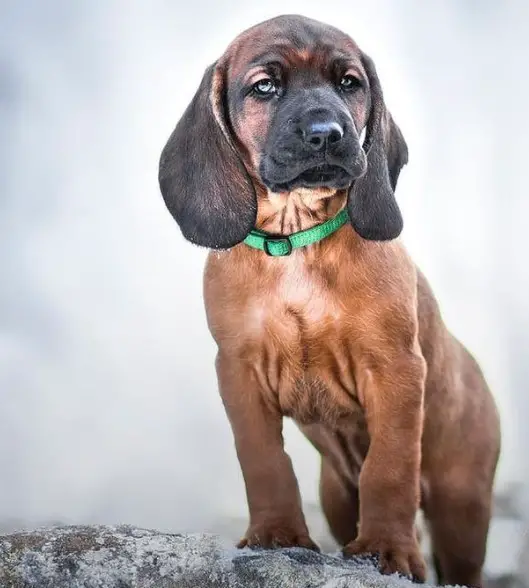
The history of the modern Bavarian Mountain Hound begins in the 70s of the XIX century. Then Baron Karl Bebenburg Reichenhall began to breed a “lightweight” Hound for work in the highlands. The Hanoverian hound was chosen as the basis, and the blood of ordinary Hounds was added to it. Dogs were selected according to the following criteria:
- Absolute hunting excitement;
- Confident and error-free tracking;
- The joy of hunting;
- Sharp instinct;
- Ability to follow the trail.
External data was of secondary importance. The Bavarian Mountain Hound was registered as a separate breed in 1883. It quickly found its place among hunters in mountainous regions, and then in other areas. In 1912, the Bavarian Mountain Hound Club was founded in Munich to develop and popularize the breed. The International Cynological Organization (FCI) recognized the breed in 1996.
Appearance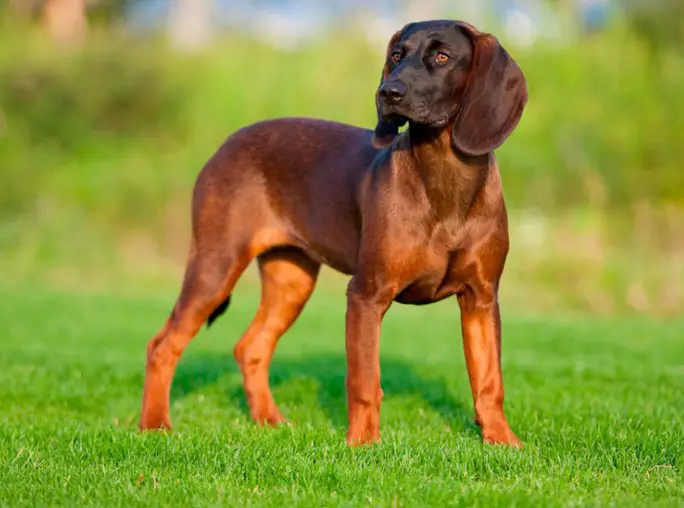
The first thing that attracts the Bavarian appearance is his unusual color. A reddish body with smooth transitions and a black velvety mask. This “design” was chosen for a reason. It allows the dog to completely “dissolve” in the autumn landscape, namely, autumn is the hunting season. The Bavarian Mountain Hound is harmonious, agile, flexible, of medium height, slightly elongated, with well-developed muscles.
- The height at the withers of males is 47-52 cm, weight is 20-30 kg.
- The height at the withers of females is 44-48 cm, weight is 17-25 kg.
The skull is slightly convex, the superciliary arches are well developed. The muzzle is slightly shorter than the skull, wide, not pointed. The bridge of the nose is straight or slightly arched. The lobe is large, not very wide, the nostrils are well open, dark red or black. The lips are well-fitting, of medium thickness, the corners are clearly visible. Jaws strong, scissor bite, straight is allowed. The eyes are neither too round nor too large, dark brown or slightly lighter in color. the eyelids are well pigmented, fit tightly. The ears are drooping, reaching the tip of the nose, heavy, set high, wide at the base, rounded tips.
The neck is of medium length. the skin on the throat is somewhat loose. The body is well-balanced and muscular. Topline with a slight rise from withers to rump. The back is flexible and strong. The circle is long, slightly sloping (20-30 degrees is considered ideal). The loin is short and wide. The chest is deep and long, moderately broad. The ribs are laid back. The ribcage reaches the elbow joint. The belly is slightly tucked up. The tail is of medium length, set high, carried horizontally, or drooping slightly downward. The limbs are straight, parallel, well set under the body, well angulated, well-articulated, and well-muscled. Feet are oval with tightly knit, arched toes. well pigmented, firm, rough pads. claws are black or pink.
The skin is tight and firm. The coat is smooth, dense, moderately harsh, with a slight sheen, tight-fitting. On the head and ears it is thinner and shorter, on the belly, limbs, tail it is more rigid and long. Colors: dark red, fawn, red, reddish-brown, brown, and brindle or mixed with black hair. on the back, the color of the coat is usually more intense, a dark mask must be present on the muzzle of any color. The tail is often darker, a small white spot on the chest is allowed.
Personality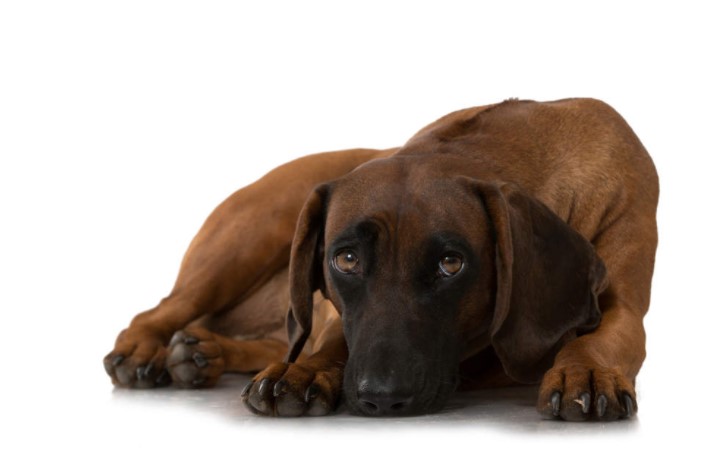
The Bavarian Hound is a calm, loyal, obedient, balanced dog. In relation to strangers, he behaves with restraint. Not intended for guarding and protection. On the street, this dog is active and hardy, but at home, it is almost invisible. By its nature, it is very social, it needs communication, affection, and attention. Friendly to other dogs often gets along well even with small pets.
The Bavarian Mountain Hound, unlike many other hunting dogs, does not run away from its owner. In everyday life and on the hunt, the dog is brave, confident, inquisitive, not devoid of a share of adventurism and a sense of humor. Shows no signs of cowardice or aggression.
Features of Maintenance and Care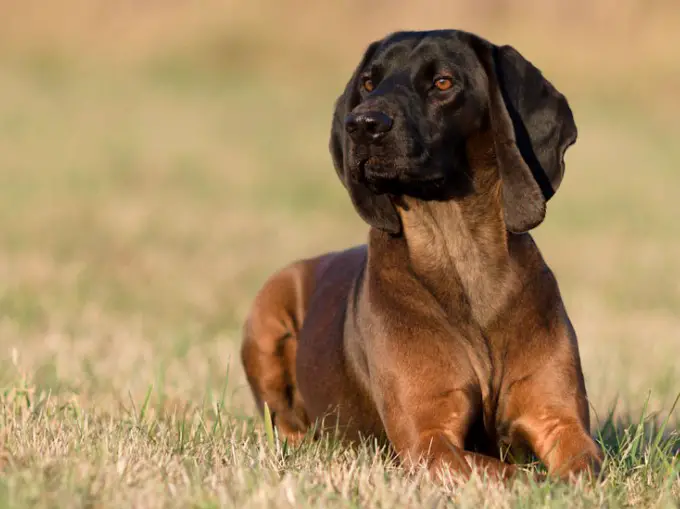
The Bavarian Hound adapts well to life in the city, including in an apartment. With proper intellectual and physical exertion, alternative hunting usually does not show problems with adaptation or behavior. You can often come across the statement that this is a “huntsman’s dog”, which is not adapted for city life. This is not quite so and is connected with the requirement of the German Bavarian Mountain Hound Club, which does not accept the distribution of these dogs as a “decoration for the sofa”, only as a working one. The short-haired dog is most adapted for life in the house, it does not smell, does not slobber, sheds slightly. Outdoor maintenance is possible, but at the same time, the aviary should be equipped with a well-insulated booth.
Caring for the Bavarian Mountain Hound is not burdensome for the owners, it will not take a lot of time or material costs. It is enough to regularly brush the dog with a rubber glove or a brush of short-haired dogs. They bathe every 4-6 months. They also monitor the cleanliness of the eyes, ears, and the length of the claws. Regular brushing is recommended.
Health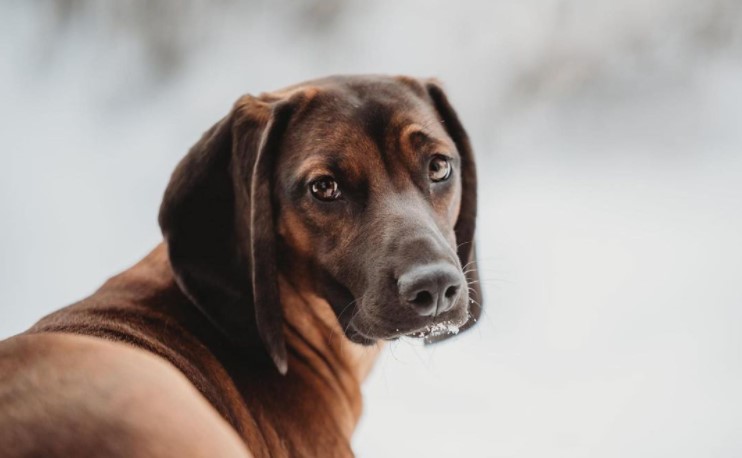
Bavarian Mountain Hounds are in good health. With good care and feeding, they rarely get sick. The most common problems are injuries associated with increased activity and communication:
- Light sprains, bruises, cuts;
- Dog bites;
- Insect bites;
- Poisoning;
- Adenovirosis;
- Oral papillomavirus.
No hereditary diseases or pathologies are observed in the breed. Breeding animals must be checked for hip dysplasia. Life expectancy is 11-13 years. Important preventive measures are timely vaccination, deworming, and treatment against external parasites, which, among other things, are carriers of dangerous diseases: piroplasmosis, dirofilariasis, and others.

